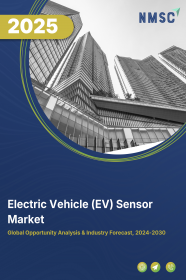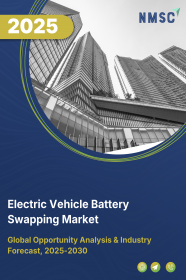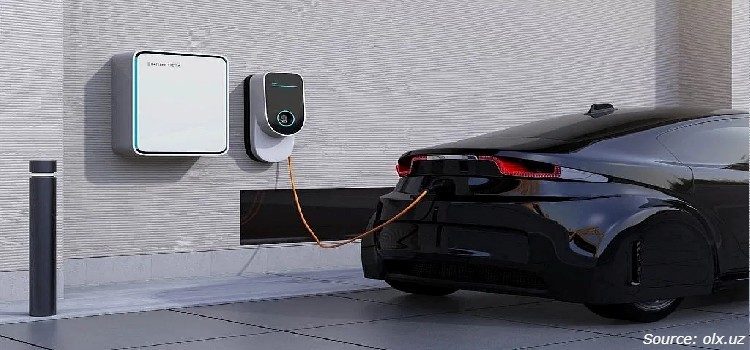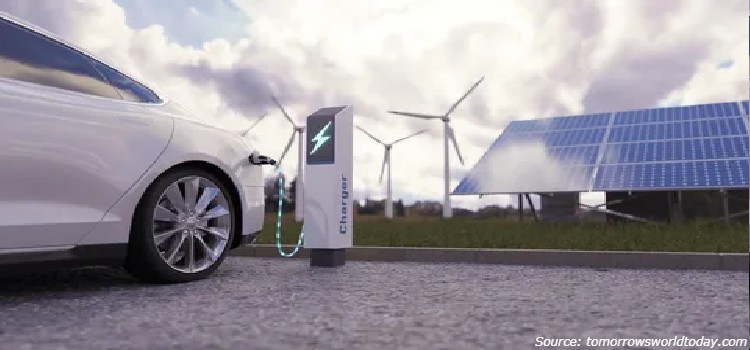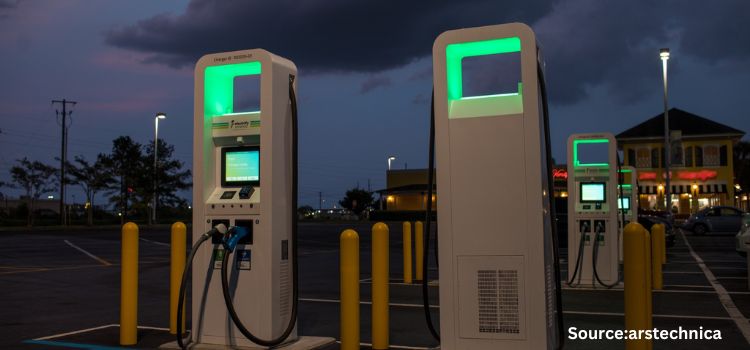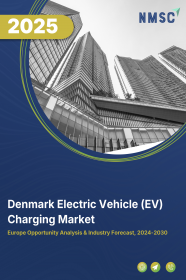
Denmark Electric Vehicle (EV) Charging Market by Type of Charger (AC Chargers, and DC Chargers), by Charging Speed (Level 1, Level 2, and Level 3), by Connector Type (J1772 (Type 1), Mennekes (Type 2), CCS (Combined Charging System), CHAdeMO, and Others), by Charging Modes (Mode 1, Mode 2, Mode 3, and Mode 4), by Installation (Fixed, and Portable), by End User (Commercial, and Residential) – Opportunity Analysis and Industry Forecast 2023–2030
Industry: Automotive & Transportation | Publish Date: 28-Jan-2025 | No of Pages: 153 | No. of Tables: 116 | No. of Figures: 61 | Format: PDF | Report Code : AT857
US Tariff Impact on Denmark Electric Vehicle (EV) Charging Market
Trump Tariffs Are Reshaping Global Business
Market Definition
Denmark Electric Vehicle (EV) Charging Market was valued at USD 52.11 million in 2022, and is predicted to reach USD 557.64 million by 2030, with a CAGR of 35.1% from 2023 to 2030. Electric vehicle chargers are defined by the amount of energy delivered to the vehicle’s battery per unit of time. It is an infrastructure that is used to connect the plug-in electric vehicle to an electrical outlet to charge the battery of the vehicle. Electric vehicle chargers are used to provide charging to EVs with a battery and the electrical source that helps to charge the battery.
Electric vehicles, neighborhood EVs, and plug-in hybrids can all be charged at a charging station by connecting to an electrical source. Advanced features including smart meters, cellular connectivity, and network access are available on some charging stations.
The charging of EVs can be carried out through several levels of charging such as level 1, level 2, and level 3. The higher the level of charging, the faster the charging process causing more power to be delivered to the vehicle. The use of electric vehicles significantly reduces the carbon footprints released into the atmosphere, which contain toxic gas. The growing threat of carbon emissions and other harmful gases stemming from transportation has triggered the vital necessity of adopting electric vehicles.
In addition, the penetration of EV charging is high in commercial spaces as compared to residential ones. Long-distance trips would benefit from ultra-fast charging capabilities made possible by public charging infrastructure. However, EV chargers for residential spaces offer significant growth potential as they are affordable and more convenient for charging electric vehicles as compared to commercial charging stations.
Government Initiatives Fuel Growth in the EV Charging Station Infrastructure Market
The market is witnessing substantial growth driven by increasing government initiatives focused on developing EV charging station infrastructure. These initiatives involve significant investments and efforts to expand and improve the accessibility of EV charging stations, fostering the widespread adoption of electric vehicles and propelling the growth of the market.
For instance, the Danish government wants 760,000 electric and hybrid vehicles on its roads, which will significantly boost the need for EV charging stations in the nation by 2030. There has been a significant increase in EV charging stations across the country. According to the Denmark Ministry, around 28% of municipalities upgraded their infrastructure and charging networks in the final three months of 2021, resulting in 95 municipalities having a total of 66,000 electric vehicles and 4,850 publicly accessible charge outlets by the end of the year.
Key Industry Players' Strategic Initiatives Drive Demand in the EV Charging Market
The presence of various prominent companies such as ABB, Clever, Norlys, Reka Cables Ltd. and EVBox are engaged in several strategies including partnership, expansion, product launch, which in turn boost the demand for EV charging market. For instance, in April 2022, ABB partnered with energy group EWII to supply 1,350 chargers to help Copenhagen airport become Denmark’s largest EV charging site. More than 80,000 daily travelers will have easy access to charging EVs in the airport. This will benefit the drivers from a broad range of ABB charging solutions, including the recently launched Terra 360, the world’s fastest car charger.
Fast Chargers' High Initial Setup Costs Hinder The Ev Charging Market Growth
The absence of incentives and concerns about the steep installation expenses for EV chargers could hinder the sector's growth. One of the most significant obstacles to expanding this industry is the substantial upfront cost associated with level 3 and ultra-fast chargers. While level 1 and level 2 chargers can require anywhere from 6 to 16 hours for a full charge, consumers are accustomed to refueling their conventional fossil fuel vehicles in just 5 to 7 minutes.
Fast chargers that can charge EVs in under 30 minutes are therefore in demand on the market. A level 3 charging station can be somewhat expensive at first, though. For those who might want to transition to EVs, this could be a deterrent because a lengthy charging period might interfere with their already hectic schedules.
Surging Adoption of Vehicle-to-Grid (V2G) EV Charging Stations in Denmark Unlocks Promising Opportunities
A technology called vehicle-to-grid (V2G) EV charging allows plug-in EVs and the power grid to exchange electrical energy in both directions. Electric vehicles (EVs) can store extra electricity and release it to the grid thanks to V2G technology. This may enhance the functionality of the electrical component and increase value for EV owners.
The development of this concept has made charging for electric vehicles easier, and EVs are now among people's top transportation options. As a result, the entire market for charging stations is essential for connecting the electric vehicle to the grid and enabling the vehicle to charge.
Two V2G EV vehicle charging stations were erected by Enel Energia S.p.A. at the Italian Institute of Technology's Genoa headquarters. The installation is a part of MOV-E, a Nissan-sponsored corporate electric car sharing trial project. The Italian Institute of Technology received two battery electric vehicles (LEAF models) from Nissan as well as the Glide app management platform. The partnership between Enel and Nissan represents a shift in the way that technology is used for sustainable transportation.
As a result, manufacturers have a great chance with the V2G charging technology because it is predicted to change the EV industry and determine how EVs will be charged in the future. Although V2G infrastructure is more beneficial than smart charging, installing V2G charging stations has a hefty up-front cost. Manufacturers of EV connectors are projected to have opportunities to produce sophisticated connectors to withstand electrical architecture due to the predictable and anticipated expansion of V2G technology.
Competitive Landscape
The Denmark Electric Vehicle (EV) Charging industry includes several market players such as Tesla Inc., ChargePoint Holdings Inc., ABB Ltd., Shell Plc, Fortum, Clever EV Charging, WallBox Inc., EVBox, Schneider Electric, Siemens, IONITY GmbH, Enphase Energy, OK amba, PowerGo, EVDK.
Key Benefits
-
The Denmark Electric Vehicle (EV) Charging market report provides a quantitative analysis of the current market and estimations through 2023-2030 that assists in identifying the prevailing market opportunities to capitalize on.
-
The study comprises a deep dive analysis of the market trend including the current and future trends for depicting the prevalent investment pockets in the market.
-
The information related to key drivers, restraints, and opportunities and their impact on the market is provided in the report.
-
The competitive analysis of the market players along with their market share in the Denmark Electric Vehicle (EV) Charging market.
-
The SWOT analysis and Porter’s Five Forces model are elaborated in the study.
-
Value chain analysis in the market study provides a clear picture of the stakeholders’ roles.
Denmark Electric Vehicle (EV) Charging Market Key Segments
By Type of Charger
-
AC Chargers
-
DC Chargers
By Charging Speed
-
Level 1
-
Level 2
-
Level 3
By Connector Type
-
J1772 (Type 1)
-
Mennekes (Type 2)
-
CCS (Combined Charging System)
-
CHAdeMO
-
Others
By Charging Modes
-
Mode 1
-
Mode 2
-
Mode 3
-
Mode 4
By Installation
-
Fixed
-
Portable
By End User
-
Commercial
-
Commercial Public EV Charging Stations
- Highway Charging Stations
-
Fleet Charging Stations
-
Workplace Charging Stations
-
Commercial Private EV Charging Stations
-
-
Residential
Key Players
-
Tesla Inc.
-
ChargePoint Holdings Inc.
-
ABB Ltd.
-
Shell Plc
-
Fortum
-
Clever EV Charging
-
WallBox Inc.
-
EVBox
-
Schneider Electric
-
Siemens
-
IONITY GmbH
-
Enphase Energy
-
OK amba
-
PowerGo
-
EVDK
REPORT SCOPE AND SEGMENTATION:
|
Parameters |
Details |
|
Market Size in 2022 |
USD 52.11 Million |
|
Market Volume in 2022 |
4 Thousand Units |
|
Revenue Forecast in 2030 |
USD 557.64 Million |
|
Growth Rate |
CAGR of 35.1% from 2023 to 2030 |
|
Analysis Period |
2022–2030 |
|
Base Year Considered |
2022 |
|
Forecast Period |
2023–2030 |
|
Market Size Estimation |
Million (USD) |
|
Growth Factors |
The emergence of key industry players. The increasing government initiatives. |
|
Companies Profiled |
15 |
|
Market Share |
Available for 10 companies |
|
Customization Scope |
Free customization (equivalent up to 80 working hours of analysts) after purchase. Addition or alteration to country, regional, and segment scope. |
|
Pricing and Purchase Options |
Avail customized purchase options to meet your exact research needs. |

















 Speak to Our Analyst
Speak to Our Analyst



